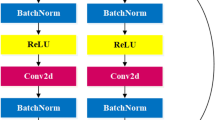Abstract
This research presents a hybrid physics-aided multi-layer feed forward neural network (MLFFNN) model to improve damage detection under Lamb wave responses. Here, a damage parameter database (DPD) is created from the complex responses of a thin aluminum plate generated using finite-element (FE) simulations. A double pulse-echo transducer configuration is implemented over the 1.6 mm thick aluminum plate with notch-like defect, which generates only A\(_{0}\) mode in the plate structure and records damage-specific S\(_{0}\) mode. Sixty-six FE simulations are conducted, each representing a distinct damage scenario in terms of damage location and Lamb wave frequency. Artificial noise is added to compensate environmental interference. Orthogonal matching pursuit was performed to improve the sparsity of the signal. Thereafter, the damage-specific features are extracted from the sparsed S\(_{0}\) signal to construct DPD for all 66 FE simulations. The fully developed DPD is deployed to train an MLFFNN supervised by a robust Levenberg–Marquardt algorithm. A set of initial tests are conducted for higher damage-depth to plate-thickness ratio with 1.0 mm notch depth, and the fully trained MLFFNN predicts the damage location with 99.94% accuracy. The proposed algorithm achieves a good level of generalization, including the cases of overlapping echoes and cluttered responses due to multiple reflections for the given damage scenarios.

















Similar content being viewed by others
References
Zhang G M, Zhang C Z and Harvey D M 2012 Sparse signal representation and its application in ultrasonic NDE. Ultrasonics 52: 351–363
Mitra M and Gopalakrishnan S 2016 Guided wave based structural health monitoring: A review. Smart Mater. Struct. 25: 053001
Mallat G and Zang Z 1993 Matching pursuits with time–frequency dictionaries. IEEE Trans. Signal Process. 41: 3397–3415
Agarwal S and Mitra M 2014 Lamb wave based automatic damage detection using matching pursuit and machine learning. Smart Mater. Struct. 23: 085012
Hong J C, Sun K H and Kim Y Y 2005 The matching pursuit approach based on the modulated Gaussian pulse for efficient guided-wave damage inspection. Smart Mater. Struct. 14: 548–560
Li F, Su Z, Ye L and Meng G 2006 A correlation filtering-based matching pursuit (CF-MP) for damage identification using Lamb waves. Smart Mater. Struct. 15: 1585–1594
Xu B, Giurgiutiu V and Yu L 2009 Lamb Wave decomposition and mode identification using matching pursuit method. Proc. SPIE 7292: 72920
An D, Kima N H and Choi J H 2015 Practical options for selecting data-driven or physics-based prognostics algorithms with reviews. Reliab. Eng. Syst. Saf. 133: 223–236
Sen D and Nagarajaiah S 2018 Data-driven approach to structural health monitoring using statistical learning algorithms. In: Ottaviano E, Pelliccio A and Gattulli V (Eds.) Mechatronics for Cultural Heritage and Civil Engineering. Intelligent Systems, Control and Automation: Science and Engineering. Cham: Springer, pp. 295–305
Khan S and Yairi T 2018 A review on the application of deep learning in system health Management. Mech. Syst. Signal Process. 107: 241–265
Melville J, Kishan S A, Chris D and Joel H 2017 Structural damage detection using deep learning of ultrasonic guided waves. AIP Conf. Proc. 1949: 230004
Su Z and Ye L 2005 Lamb wave propagation-based damage identification for quasi-isotropic CF/EP composite laminates using artificial neural algorithm: part I—methodology and database development. J. Intell. Mater. Syst. Struct. 16: 97–111
Rizzo P, Bartoli I, Marzani A and di-Scalea F L 2005 Defect classification in pipes by neural networks using multiple guided ultrasonic wave features extracted after wavelet processing. ASME J. Press. Vessel Technol. 127: 294–303
Lu Y, Ye L, Su Z, Zhou L and Cheng L 2009 Artificial Neural Network (ANN)-based crack identification in aluminum plates with Lamb wave signals. J. Intell. Mater. Syst. Struct. 20: 39–49
Atashipour S A, Mirdamadi H R, Hemasian-Etefagh M H, Amirfattahi R and Ziaei-Rad S 2013 An effective damage identification approach in thick steel beams based on guided ultrasonic waves for structural health monitoring applications. J. Intell. Mater. Syst. Struct. 24: 584–597
Lim H J, Sohn H and Kim Y 2018 Data-driven fatigue crack quantification and prognosis using nonlinear ultrasonic modulation. Mech. Syst. Signal Process. 109: 185–195
Zhao Y, Li F, Cao P, Liu Y, Zhang Z, Fu S, Zhang J and Hu N 2017 Generation mechanism of nonlinear ultrasonic Lamb waves in thin plates with randomly distributed micro-cracks. Ultrasonics 79: 60–67
Russell J, Cawley P, Drozdz M, Lowe M and Habgood N 2008 Finite element modeling of elastic wave propagation and defect interaction in large, complex components. AIP Conf. Proc. 975: 99–106
Rizvi H 2020 Lamb wave dispersion curve. https://www.mathworks.com/matlabcentral/fileexchange/73050-lamb-wave-dispersion-curve, MATLAB Central File Exchange
Ramadas C, Balasubramaniam K, Joshi M and Krishnamurthy C V 2011 Interaction of Lamb mode with structural discontinuity and generation of turning modes in a T-joint. Ultrasonics 51: 586–595
Abdeljaber O, Avci O, Kiranyaz S, Gabbouj M and Inman D J 2017 Real-time vibration-based structural damage detection using one-dimensional convolutional neural networks. J. Sound Vib. 388: 154–170
Cai T T and Wang L 2011 Orthogonal matching pursuit for sparse signal recovery with noise. IEEE Trans. Inf. Theory 57: 4680–4688
Sahoo S K and Makur A 2015 Signal recovery from random measurements via extended orthogonal matching pursuit. IEEE Trans. Signal Process. 63: 2572–2581
Goodfellow I, Bengio Y and Courville A 2016 Deep learning. MIT Press, Cambridge
Pasupa K and Sunhem W 2016 A comparison between shallow and deep architecture classifiers on small dataset. In: Proceedings of the 8th International Conference on Information Technology and Electrical Engineering (ICITEE), IEEE, pp. 1–6
Author information
Authors and Affiliations
Corresponding author
Rights and permissions
About this article
Cite this article
Rai, A., Mitra, M. A hybrid physics-assisted machine-learning-based damage detection using Lamb wave. Sādhanā 46, 64 (2021). https://doi.org/10.1007/s12046-021-01582-8
Received:
Revised:
Accepted:
Published:
DOI: https://doi.org/10.1007/s12046-021-01582-8




